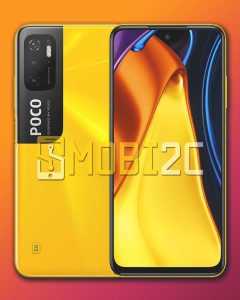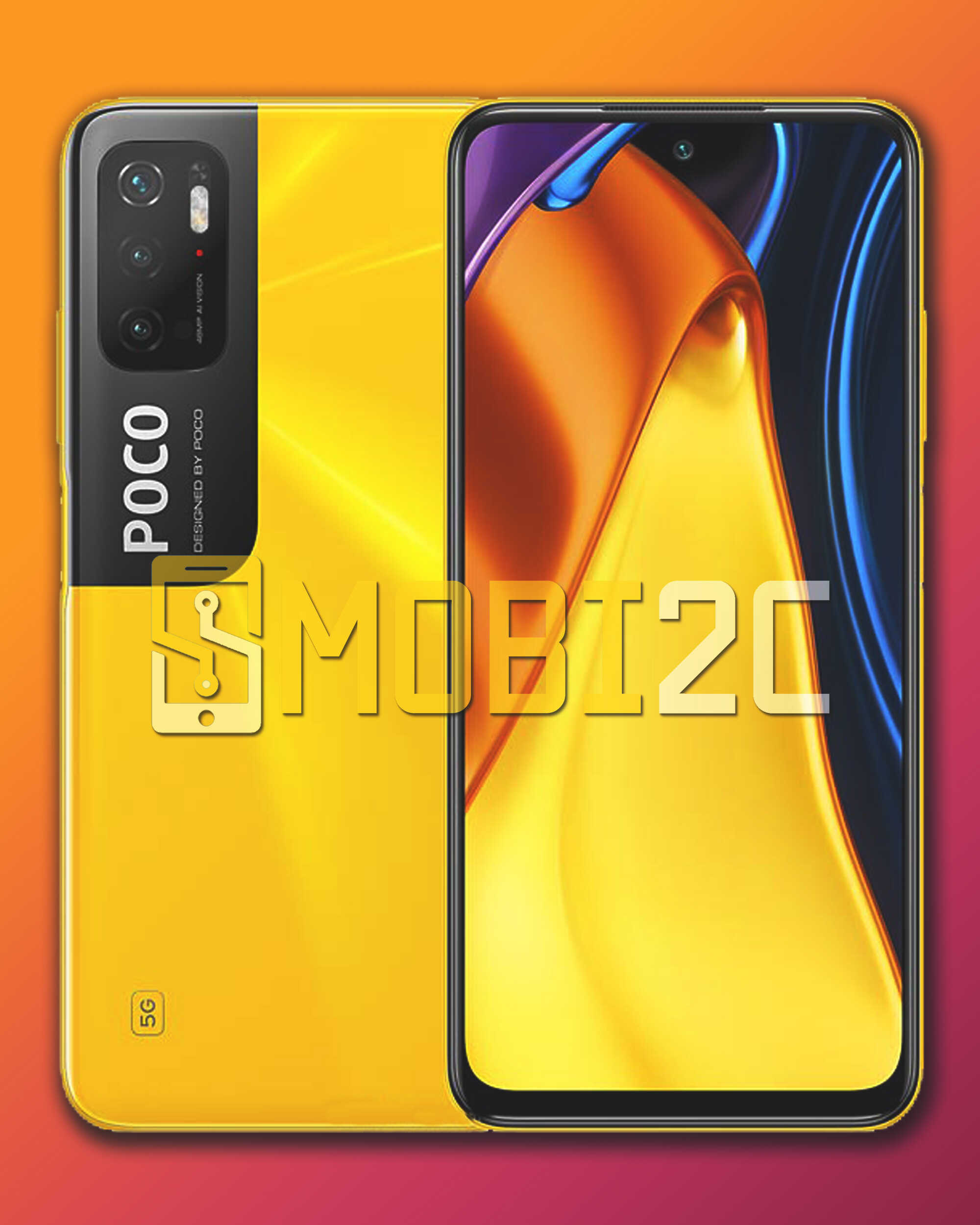Xiaomi Poco M3 Pro Phone Review
Poco started its year 2021 with products that have won the admiration of the many, and great fame within the global sales markets, especially with the launch of its last phones, Poco X3 and X3 Pro, which entered into strong competition with the higher-priced OnePlus phones.
After the success of the M series in several respects, including battery life and outstanding performance, similarly as a singular professional design, this series reached the best sales rates, and therefore the company chose to complete it by launching the M3 Pro and M3 Pro 5G models, at a comparatively reasonable price and desirable and distinctive specifications. Introduce them within the next paragraphs.
Poco M3 Pro Design

Poco used a solid chassis for its new Poco M3 Pro phone, which was preceded by Samsung in its advanced flagship phones, Galaxy S21, but the presence of the many design differences in Poco phones are some things that has got to actually happen, because the M3 Pro model was distinguished by its bright yellow color that covers the phone cover Rear aside from an oblong black frame, extending within the upper left corner during a unique longitudinal shape and carrying the camera setup, then approaching that frame the wide Poco logo and also the phrase “Designed by POCO” in smaller font.
The back structure of the phone is formed of glossy plastic, which is vulnerable to smudges with fingerprints and dirt, but the utilization of the protective covering will keep the phone clean, and therefore the Poco M3 Pro weighs about 208 grams, which implies that it’s but its predecessor M3 by approximately 18 grams, because it contains the tiniest battery with a capacity of 5000 mAh.
The Poco M3 Pro is offered in colors kind of like the M3 models, which include yellow, black, and soft blue.
The phone cover is curved from the rear a bit inward to satisfy the frame and therefore the phone ports from the underside, which vary between a headphone jack and an infrared port, and on the proper side of the phone we are going to find that Poco has integrated the ability button with the fingerprint reader, below the degree control buttons, and this reader is characterized by its good response In daily uses.
This phone differs from its predecessors by having a hole within the middle of the screen for the selfie camera, which makes it look more modern than the M3 base phone, which was supported alittle drop design for the front camera.
The Poco M3 Pro incorporates a 6.5-inch LCD screen that supports 90Hz refresh rate and is protected by Gorilla Glass 3.
The phone screen is about to work at the default refresh rate of 60 Hz, but we are able to move to the upper rate of 90 Hz by heading to the phone settings, to search out that there are most of the settings for the screen, like the colour setting that has to be set manually thanks to the tendency of the screen colors by default to clear cold, and also the automatic brightness It doesn’t work properly all the time, so we may should switch it manually from time to time.
Despite the low price of the phone, it brings us the feature of the variable rate of the update, which successively preserves the battery power from running out, because the latter depends on regulating the refresh rate and adjusting it in step with the tasks performed on the phone at the number of 90, 60 or maybe 50 Hz, because it are Added the 30Hz option, with the upcoming system update promised by the phone.
With these options, the contents of the screen appear completely smoothly of every kind, but with the employment of headphones, the headphone jack will provides a slightly loud sound and lacks the stereo levels offered by the most phone M3, and when hoping on the loudspeaker, we discover that the sound levels are completely sufficient, although they are doing not reach to the amount produced by current mid-range phones.
Poco M3 Pro Performance
The Poco M3 Pro uses MediaTek’s Dimensity 700 chipset, which provides a significantly better performance than its predecessor, the Snapdragon 662, within the M3 predecessor. A55 at 2.0 GHz, these cores also are attached to the Mali-G57 MC2 dual-core graphics unit, and these chipsets, of course, support 5G communication technology, for 2 SIM cards.
The Poco M3 Pro phone scored 557, and 1733 points within the performance criteria for single and multi-core processing, so this version is a dead ringer for what’s offered by the Poco X3 model, which scored 550, 1774 points consistent with the identical performance criteria using the Snapdragon 732G chipset.
This phone has the flexibility to perform daily tasks quickly and simply, like browsing or scrolling between social media, and also the M3 Pro has shown better performance than its standard predecessor in most games, because it was equipped with two options for 4 or 6 GB of RAM, to be matched by 64 or 128 GB of RAM. UFS 2.2 permanent storage memory, which provides data faster than its UFS 2.1 counterpart within the base phone M3, which accustomed offer two models of this memory, one in all which is UFS 2.1 with a capacity of 64 GB, and also the other with a capacity of 128 GB and of the upper type UFS 2.2.
The Poco M3 Pro phone supports 5G networks, on several bands, including n1/n3/n7/n8/n20/n28/n38/n40/n41/n66/n77/n78, and these bands vary from one region to a different and it’s likely that The Indian model of the phone offers limited calling to bring down the worth of the phone.
Bluetooth 5.1 technology is additionally running on all phone models, while the worldwide version of it supports the NFC remote payment feature.
Poco M3 Pro Battery
The Poco M3 Pro phone contains a large battery with a capacity of 5000 mAh, and it supports 18W fast charging. Poco has attached her new phone with a 22.5W charger, which consists of a plug that holds the USB-A port, and a cable that converts from USB-A to USB-C.
In fact, the M3 Pro phone battery cannot reach the duration of the most phone battery, but it can last for quite a full day of daily use, and when charged with an influence of twenty-two.5 watts, it absolutely was found that it needs quite two hours to finish the charging percentage.
Poco M3 Pro camera capabilities
The phone’s rear camera specifications haven’t changed from what was stated within the main M3 phone, because it still works with 48 mega-pixels, and it also lacks the wide lens, and only provides 2 mega-pixels for every of the macro camera and also the camera lens, noting that the last two lenses are of little use.
The interface for these cameras has not changed either, as they still have easy accessibility to capture modes that include applying HDR, support for AI processing, LED flash, Google Lens feature and lots of more.
1080p video can still be recorded at 30 frames per second, but the video modes were limited to nighttime mode and manual setting.
Since the Poco M3 Pro phone didn’t change the specifications of the previous generation camera, we should always not expect more results and details, and it may be said that the essential camera shots are very suitable and contain plenty of details when taken in good lighting, but this judgment will differ in fact when the lighting is poor, because the camera takes longer to specialise in the topic, colors eventually appear faded and noise and noise levels become higher within the image.
The night mode also suffers from a decrease in its ability to repair all the issues shown within the image.
Operating System Details of Poco M3 Pro
Poco seeks to differentiate its phones actually from Xiaomi and Redmi products by improving the computer program, because it adds to its own MIUI interface more modern icons, and completely freed from ads, and Poco was the primary to innovate the applying drawer and offer many additional improvements to the present interface, and it’s stated This brand that its phones will get new and exclusive features by the tip of this year.
The advantages of the phone’s interface didn’t stop there, but it greatly reduced the quantity of rarely used bloatware programs that were included within the base phone M3 and maybe the new interface, Poco UI, will bring us more special features also.
All Poco phones still use MIUI, but they’ll roll out their unique features to their own devices, and therefore the UI will likely be renamed POCO UI.
The M3 Pro phone works with the MIUI 12.0.5 computer program, which relies on the Android 11 software system, as its updates launched by Xiaomi returned an excellent deal of improvement to the current interface, and it became possible to uninstall system applications due to the features of the MIUI 12.5 interface, which implies that we are able to uninstall Install Xiaomi services as soon because the Poco M3 Pro phone switches to MIUI 12.5.
Finally, Poco management has stated that it’ll provide the Poco M3 Pro with three years of security updates, and it always takes your time until the stable versions of the fashionable user interfaces are released.
Conclusion
The Poco M3 Pro phone fulfilled Poco’s hopes to launch a solid, fast-performing phone, with a high-resolution screen and advanced processing chips, which is contemporary with modern phones in supporting 5G networks, and running easy-to-use, ad-free interfaces, but it failed to include any battery improvements. The phone or the camera unit, which remains the simplest which will be offered in a very price range that doesn’t exceed $210.
